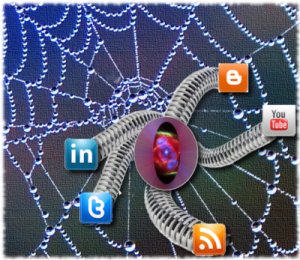“Say Tom, let me whitewash a little.” – The Adventures of Tom Sawyer
In my last post about creating the content marketing pipeline I omitted a crucial piece of information. Why would otherwise sane co-workers do the marketing team’s work for them? Some say you need a culture of content creation, while others say that’s just the happy ending in a marketer’s dream.
As I mentioned in my last post, Peter Drucker once said that, “marketing is not a function, it is the whole business seen from the customers point of view.” The business connects with customers across a wide range of touch points. The stories we tell, the problems we solve and the information we share across every connection is the content we need to capture, optimize and amplify. So the point is, we’re already creating it; now it’s our job to find, edit, curate, promote, and publish it when and where our customers want to consume it.
It’s all about who you know
Since we’re already creating the content, I think the cultural shift that is needed is in the discipline of sharing. Studies show that children learn to share around ages 7 to 8. Research indicates they are most likely to share if they know the person they are sharing with. It may come as no surprise that often adults behave like children. My first recommendation is to get to know the people you need to share with. Take them to lunch, build relationships. It seems absurd to use an SEO metaphor, but here goes: internal link building is as important as external link building.
A big idea
To successfully launch a new program that gets everyone in the business involved in content creation you need a big idea. Specifically you need a strategic and emotionally compelling goal. This goal is the North Star, it guides your decisions, motivates your efforts and informs your attitudes and beliefs.
Get the right people on the bus
You’re not going to turn poor writers into good writers. And people who hate to write will not become silver-tongued bloggers. Instead, you need to focus on getting the right people into the right seats on the bus. Anybody can participate in idea creation by sharing their ideas and forwarding their emails. However, when it comes to actually writing, you need people who can write. These people are gold so treat them like it. It would also be wise to consider this when you hire new people.
If you turn those people into Rock Stars in your organization you’ll find that more good writers are going to want to get on the bus. Also, people who never thought much about writing before are going to aspire to be good enough to be on the team. Your innovators will be the first ones on the bus. They’ll be followed by a group of early adopters, but it will require much more effort before you get the early majority aboard.
Be clear about the value proposition
Clearly define what’s in it for them. What is it that your co-workers get in return for their efforts that they can’t get any other way? Maybe its financial incentives, maybe it’s the promise of time saved in the future, or it could be social currency. FMRI studies suggest it truly is more pleasurable to give than to receive. Whatever you decide, be sure it matches the motivation of the content creators.
Maybe they want to grow their influence, connect to the right people, be recognized as a leader, or get on a soapbox and make their opinion known. Some organizations use gamification to motivate their employees. Remember Tom Sawyer’s observation, “in order to make a man or a boy covet a thing, it is only necessary to make the thing difficult to attain.”
Reduce friction
Now, I’m going to seem to contradict myself. Make it easy. Remove all of the obstacles to sharing. You don’t need 50 pages of style guidelines. Make a simple process that’s easy to understand and remember. Clearly explain the process to everyone you want to participate so that you maximize the ideas flowing into your pipeline. Help them get in the habit of sharing. Ask them to describe how they solve problems, prompt them to share information they share with customers. And remember sharing goes both ways! Make sure your colleagues know what’s available to share once you’ve collected it.
Reduce anxiety
Not everyone likes to write. Nobody likes to have their writing criticized. Writing is personal and people will take your criticism personally. So, the quickest way to lose your contributors is to publicly reject their work or ideas. Be clear about your goals and your requirements. Be accepting and supportive, and don’t set them up to fail.
It’s inevitable that some ideas are not going to be blog-worthy. It could be poorly written, violate your policy or run counter to your strategy. Your first thought might be to avoid confrontation and not bring up the ill-conceived content. However, please acknowledge that you received it, express gratitude for the effort, and offer feedback on what could make it even better next time. That kind of support is needed if not expected to prevent your volunteers from abandoning your cause.
Finally, provide training and support for people who want to be better writers. Suggest classes or meet together once a month to discuss best practice. Be encouraging and provide as many opportunities to improve as you can.
Incentives to take action
This is a delicate balance. You may need incentives to get the process going. One idea is to try a point system that allows participants to trade in points for social or financial rewards. Remember, social pleasures can be just as satisfying as financial rewards. Also, recent research on motivation suggests when the desired behavior is complex, increases in financial rewards actually leads to decreases in performance.
Meet regularly
This may be the most important advice of all. If you meet together regularly to share ideas between marketing, sales, and service you will be doing something that you should have been doing all along that you might not have been doing before. The teams will find these meetings so beneficial that they’ll be hard to stop once they get going. You see, it all comes back to who you know.








